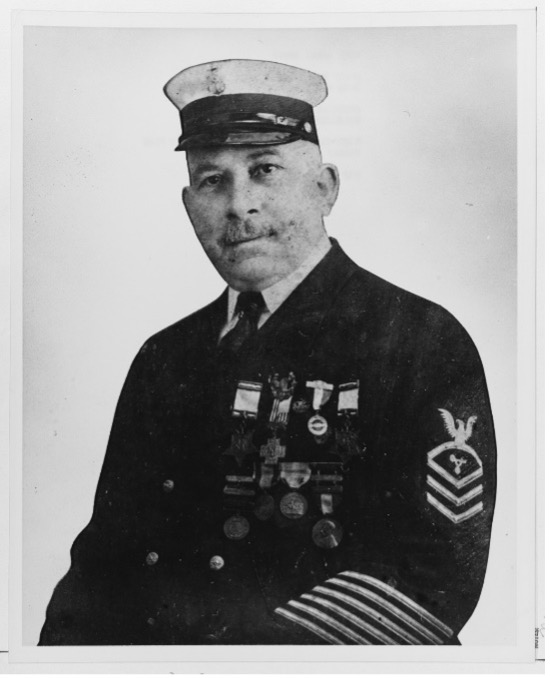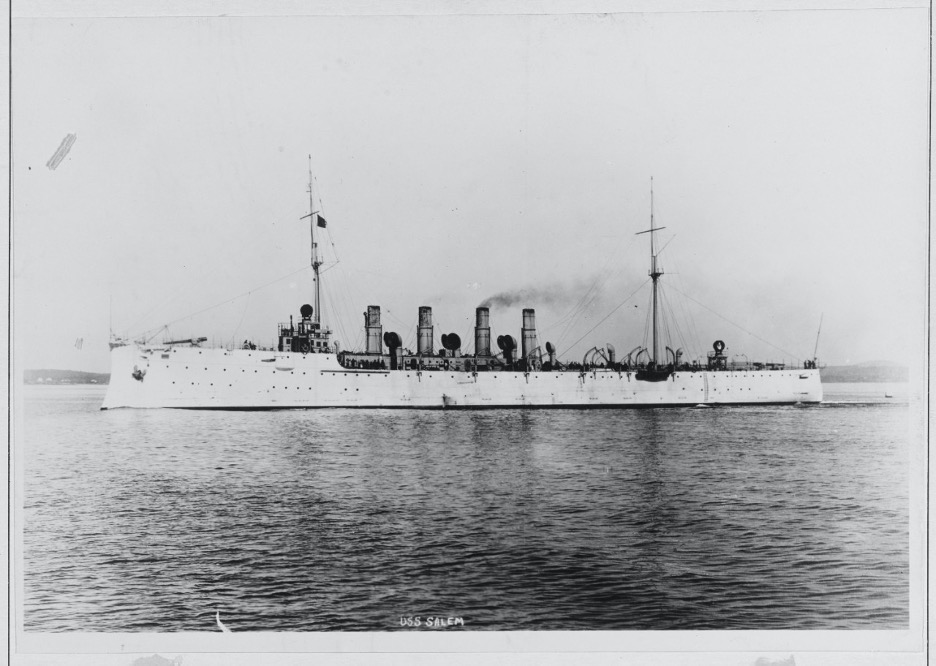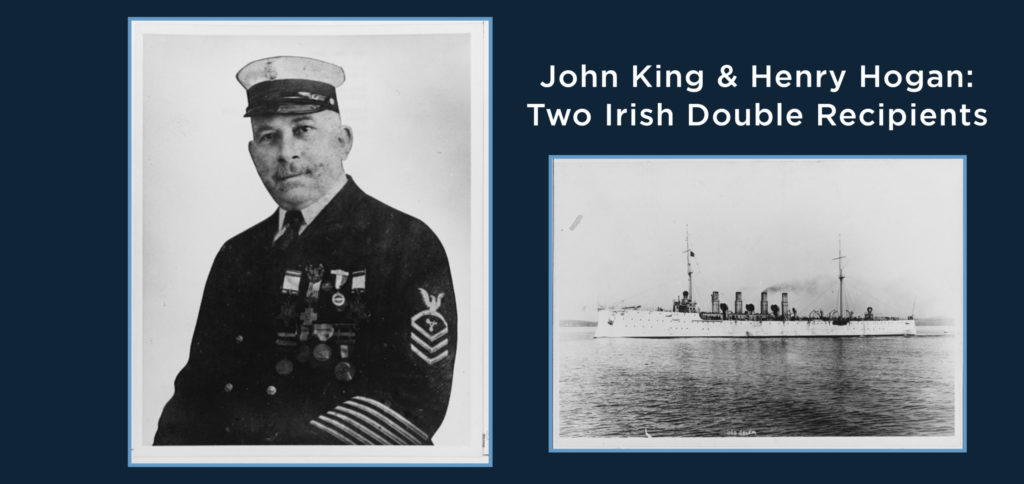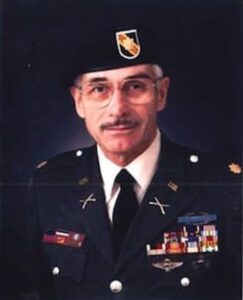More than 250 men born in Ireland have earned the Medal of Honor, the United States’ highest decoration for valor. Of these men, five of them—John Cooper, John King, Henry Hogan, John Laverty, and Patrick Mullen—have the historical distinction of receiving it twice, a practice that Congress ended shortly after World War I. Of the five, John King and Henry Hogan earned their Medals of Honor after the Civil War ended.

Navy Chief Watertender John King is the last Irish-born recipient to earn two Medals of Honor. He earned them while serving aboard two different ships, eight years apart, and one of them when he was nearing fifty. King was born on February 7, 1862, in County Mayo, Ireland, and he served aboard several ships in the U.S. Navy, having joined the service as a coal passer in 1893. In 1901, he was a watertender aboard the U.S.S. Vicksburg when a boiler leak threatened the ship. King, acting fast, wrapped a blanket around himself and covered his face with a wet cloth. He lowered himself down into the boiler room, which had rapidly filled with boiling steam and scalding water, to work at containing the accident. Due to this bravery and other Vicksburg sailors’ skill, the threat was contained within minutes. By the end of 1901, King had received his first Medal of Honor.
Eight years later, in 1909, King rushed into the boiler room of the U.S.S. Salem. An accident had left this crucial part of the ship filled with flames, hot gas, and steam. Acting quickly, King entered the room, where sailors inside had already succumbed to the heat and flames, and saved the boilers before the accident could grow worse. Then, despite his burns and wounds, he carried an incapacitated sailor to safety. Upon his attempt to return to the boiler room to rescue more men, other Salem sailors restrained him; they were worried about the extent of King’s injuries. Of the accident, he would later say, “[the] explosion in a boiler carried away the tube and 12 men in the fire-room stood in danger of being scalded to death. I was in the fire-room, and turned on the blowers full force…We got all the men out of the fire-room and no one was injured.” These dual acts of heroism averted potential catastrophes, as boiler accidents posed a serious threat of critically damaging or sinking ships. King received his second Medal of Honor from President Taft, on December 2, 1909, in the presence of the entire Presidential cabinet. After becoming a naturalized American citizen, King would eventually return to Ireland with his wife until her death in 1936. He then returned to the United States, where he lived until he passed away in 1938.

Another Irish double-recipient is Army First Sergeant Henry Hogan. Hogan was born in County Clare, Ireland on the 8th of March, 1840, and by 1865, he had moved to the United States and joined the U.S. Army. During the winter campaign of 1876 American troops fought a series of engagements against Lakota Sioux Indians primarily in and around the Montana Territory. On October 21, 1876, then-Private Hogan fought men under Sitting Bull’s command, following a breakdown of talks. The skirmish claimed few lives on both sides and ended with the American troops chasing Sitting Bull and his forces approximately 40 miles. Hogan would do battle again during the winter, with the Sioux on December 18, 1876, and with Crazy Horse and his warriors in January of 1877. For this, Hogan would receive the Medal of Honor for “gallantry in actions.” General William Tecumseh Sherman presented him with the award in July of 1877 while Sherman was in the Montana Territory.
His second Medal of Honor action took place nearly one year later, during the Battle of Bear Paw in late 1877. Approximately 500 American soldiers attacked a Nez Perce camp during the final engagement of the Nez Perce War. During the battle, which would end with the surrender of the Nez Perce, the U.S. 5th Infantry charged at the defenders, with 1st Lieutenant Henry Romeyn at their head. Most of the casualties from the nearly week-long battle occurred on the first day, and Romeyn was among the wounded. Now a first sergeant, Hogan braved withering fire to rescue the injured officer, who was his company commander. Both men would receive the Medal of Honor on June 26, 1894, for their actions during the fight, Romeyn for his bravery in command and Hogan for saving Romeyn. The lieutenant actually recommended Hogan for the award himself, writing that Hogan gathered the men who “carried me off the field” and “whose action probably enabled me to live.” This would not only be Hogan’s second Medal of Honor, but one of the few awarded for saving the life of another recipient. He retired from the Army in 1881, and appears to have settled in Miles City, Montana; he passed away there in 1916 at the age of 76.
These men represent a small cross-section of the history of Irish heroism recognized by the Medal of Honor which stretches from the inception of the award through the present day.




